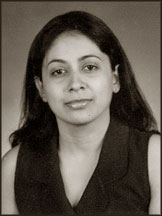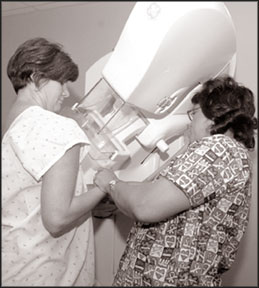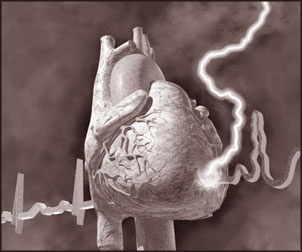Health wise
Overweight, obesity and cancer
by D.P. Athukorale
Obesity is an important cause of type 2 diabetes, high blood pressure
and hyperlipidaemia (high cholesterol and triglycerides). Obesity
accelerates the development of atheroma (atherosclerosis) and increases
the risk of coronary heart disease (heart attacks and angina) and early
death.
 Substantial evidence supports the link between increasing adiposity
and higher risk of many cancers. International Agency for Research on
Cancer (IARC) evaluated the link between weight and cancer in 2002 and
concluded that some colon cancers, post-menopausal breast cancers,
kidney cancers and cancers of the oesophagus could be prevented by
avoiding weight gain. Substantial evidence supports the link between increasing adiposity
and higher risk of many cancers. International Agency for Research on
Cancer (IARC) evaluated the link between weight and cancer in 2002 and
concluded that some colon cancers, post-menopausal breast cancers,
kidney cancers and cancers of the oesophagus could be prevented by
avoiding weight gain.
Since IARC report, many scientists have investigated the association
between overweight adiposity and cancer and the results indicate that
more cancers are probably linked to obesity at than was thought
originally, including cancer of stomach, gallbladder cancer, liver
cancer, pancreatic cancer, certain types blood cancer (leukaemia) and
prostatic cancer.
According to Reeves and colleagues who investigated one million women
aged 50 - 64 with regard to their body mass index (BMJ 2007, 10, 1136)
came to the conclusion, that overweight and obesity were associated with
significantly increased incidence of breast cancer, womb cancer, kidney,
cancer, cancer of oesophagus, leukaemia multiple mycloma, certain types
of lymphoma, pancreatic cancer and ovarian cancer.
Recent studies suggest that insulin resistance (which is common in
obese persons) is associated with pancreatic cancer. Another study found
that a tendency towards central (versus peripheral) weight gain was
associated with a 45% increase in risk of pancreatic cancer.
Obesity is a stronger prediction of colorectal cancer in men compared
to women. Other research workers have found that waist circumference was
a risk factor for colon cancer, that was stronger than BMI, both in
obese men and women.
Increasing adipositys (both overall and central) is associated with
many cancers probably due to metabolic and endocrine effects of obesity
and the alterations they induce in the production of peptides and
steroid hormones.
There is an epidemic of obesity in Sri Lanka especially in the urban
areas and there are no signs of abating.
Obesity and overweight are quite common in the Western countries and
more than 60% of the middle-aged and elderly people in USA are obese or
overweight due to over eating and lack of exercise and so far all
America's attempts of curbing the epidemic of obesity have failed.
Obesity is becoming more and more common in children. It is high time
that the Ministry of Health especially the Director of Non-Commercial
Diseases start a program to control this epidemic of obesity as early as
possible.
State-of-the-art breast clinic at Sri Jayewardenepura G.H.
Breast cancer is the commonest cancer affecting women with more than
one million new patients diagnosed per year, worldwide. Global incidence
of breast cancer has been rising over the last few decades with more and
more, younger females being the victims.
 The WHO statistics indicate that breast cancer is an equally common
problem in both developed and less developed countries. It is the most
common cause of death from cancer in women accounting for almost 400,000
deaths per year throughout the world. However, incidence of breast
cancer has started to decline in some of the developed countries with
five year survival rates exceeding 70% mainly due to improvements in
early detection and treatment. It is widely accepted that early
diagnosis and appropriate treatment is the key to success with breast
cancer care. Randomized trials have shown that mammographic screening
can reduce the breast cancer mortality by 25-30% in the appropriate age
group (45 - 65 years in Sri Lanka). The WHO statistics indicate that breast cancer is an equally common
problem in both developed and less developed countries. It is the most
common cause of death from cancer in women accounting for almost 400,000
deaths per year throughout the world. However, incidence of breast
cancer has started to decline in some of the developed countries with
five year survival rates exceeding 70% mainly due to improvements in
early detection and treatment. It is widely accepted that early
diagnosis and appropriate treatment is the key to success with breast
cancer care. Randomized trials have shown that mammographic screening
can reduce the breast cancer mortality by 25-30% in the appropriate age
group (45 - 65 years in Sri Lanka).
It is also believed that national screening programmes under optimal
conditions with high compliance will be able to reduce the mortality by
at least 20%. One other benefit of screening and early detection of
breast cancer is that it allows surgeons to perform more localised
cosmetically acceptable surgeries, avoiding mutilating mastectomies and
expensive reconstructions.
Unfortunately, in most of the developing countries, including Sri
Lanka, the majority of the patients present to the healthcare system
with advanced disease, where current treatment is of little benefit. As
a result, the developing countries contribute to approximately 250,000
of the annual breast cancer deaths, far more than the developed
countries in spite of their higher incidence rates. Lack of awareness,
proper screening programmes and access to breast care facilities are the
main reasons for this discrepancy.
In Sri Lanka, according to the latest national statistics from the
National Cancer Control Programme (NCCP), breast cancer is the commonest
cancer among females in the country, accounting for 22.8% of all female
cancers. In fact, it is the commonest cancer among the whole Sri Lankan
population, contributing to 12.6% all cancers.
In the year 2000 Sri Lanka had a total of 1324 new females diagnosed
with breast cancer with an annual age standardised rate of 19.1 per
100,000 population.
This was more than 6% increase compared to the previous cancer
registry data, published in the year 1995. This rising incidence
indicates that breast cancer is now emerging as a major health issue in
Sri Lanka, one that needs to be addressed in a timely and an organised
manner, to obtain objective outcomes.
A fully empowered breast clinic, with the input of multiple relevant
disciplines which includes a surgeon, oncologist, radiologist and a
pathologist as a team is the first step in the right direction for early
diagnosis and treatment of breast problems, especially breast cancer.
There only a very few such clinics, especially devoted for breast
care in the public health system throughout the island. Even within the
Colombo district, which apart from having the highest population is also
possibly draining the majority of the patients from throughout the
island, there are only a few such specialised breast clinics.
Taking all of the above into consideration, a dedicated breast clinic
is to be established at the Sri Jayewardenepura General Hospital (SJGH)
with immediate effect, led by Consultant Surgeon Dr.(Mrs) Dilini H.
Samarakoon MS MRCS (UK).SJGH a tertiary care health establishment is
fully equipped with the necessary personnel and resources and its
geographical situation allows easy access from any part of the country.
 Availability of radiological assessment i.e. mammography and
ultrasound scanning of the breasts with pathological assessment i.e.
biopsy facilities of the breast lump in close proximity will allow this
clinic to function essentially as a one-stop clinic, reducing the hassle
associated with waiting for investigations for the patient. The pleasant
hospital environment and friendly staff devoted to breast care will be
added attractions to these patients seeking relief from fear and
agitation of the possibility of being diagnosed with breast cancer. Availability of radiological assessment i.e. mammography and
ultrasound scanning of the breasts with pathological assessment i.e.
biopsy facilities of the breast lump in close proximity will allow this
clinic to function essentially as a one-stop clinic, reducing the hassle
associated with waiting for investigations for the patient. The pleasant
hospital environment and friendly staff devoted to breast care will be
added attractions to these patients seeking relief from fear and
agitation of the possibility of being diagnosed with breast cancer.
The clinic will be devoted to dealing with all breast complaints,
aiming to offer early diagnosis and planning of treatment, counselling
and psychological support where necessary and all in all to provide
holistic breast care to the patient.
* Breast cancer is the commonest cancer in Sri Lanka, with a rising
incidence.
* Lack of specialised breast clinics to deal with this emerging major
health hazard, resulting in presentation of patient at a more advanced
stage, increasing risk of morbidity and mortality.
* Fully-fledged breast clinic at SJGH with multidisciplinary input
led by a lady surgeon.
* Availability of Triple Assessment i.e. clinical, pathological and
radiological assessment of the breast which improves diagnostic
capabilities.
* One-stop clinic to improve quality of care.
Dr. Dilini Samarakoon
Women suffer from womb to tomb
"Around the world, as many as one in every three women has been
beaten, coerced into sex, or abused in some other way, most often by
some one she knows, including by her husband or another family member;
one women in four has been abused during pregnancy"
This is the an authoritative statement given by the United Nations
Population Fund to draw the attention of gender based violence. In Sri
Lanka, violence against women has always been widespread in rural, urban
and plantation sectors. Due to the lack of a proper reporting system, it
is difficult to identify its prevalence. The number of women victims of
criminal offences in 1992 was reported as 3608, but in 1982 this number
was 2688. Since the number has increased it cannot be attributed totally
to the increase in crime against women and may also be a result of
increased reporting to the police.
Women's reproductive health is affected by violence and miscarriage,
pregnancy complications, unsafe abortion and maternal deaths occur due
to violence. The mental harassments resulting from family members are
also a cause of suffering for the unborn baby. All the stresses and
mental harassments from the husband would be obstacles for the baby
infant. Sometime he or she may be disabled, mentally retarded or not
very active. When she was passing through her childhood she may have
seen her mother suffering through the father's violence. The mother is
attacked by the father. If she is a girl, her protection is also a
burden to her mother as the husband is a drunkard.
Violence
When she becomes young, if her parents do not have enough money, it
will be an obstacle for her education. As a young girl she will start
working in a factory or somewhere with her little education. If she
wants to earn more money she will try to find easy ways to earn money
and get caught by the undesirable elements in the society.This vicious
circle will run through her future generations also, in such a way that
when she is old her children too will not have enough things to look
after her. This will result in their not being able to prepare their
customary obligations by their elders in the family.More often we have
come to know about under aged workers. Even though this has been a long
standing problem in our country, as the domestic work fall into the
informal sector of employment, no data of women and children who work as
domestic workers in Sri Lanka are officially recorded. But the problem
is they have so many problems such as poor wages, Labour exploitation
and their unproductive time. According to the ILO Convention on
'Domestic Labour, Domestic Labour' is defined as being work that is
undertaken to facilitate the functioning of the domestic sphere and the
fulfillment of personal needs.
As the majority of domestic workers are women, the suffering is a
common thing for them. According to the media reports, the incidents of
violence against women such as assault, attempted rape and sexual
harassment are not recorded properly. It is recorded that around 100,000
to 125,000 domestic workers are engaged in domestic work in Sri Lanka,
three fourth of the work without proper wages and characterized by lack
of freedom.
The other unfortunate situation is that their services are confined
to the houses, it is difficult to measure them and there is no proper
method of tracking and monitoring the welfare of these people.
Compensation
Most crimes against them, specially the children, come under the
purview of the penal code. On conviction, the offender gets is by a
prison term of not less than two years and not exceeding 20 years, with
a fine and an order to pay compensation to the victim as determined by
the court. If there is a method to register all domestic workers with
the department of labour by law, then only will they be able to make
some recommendations for their rights and benefits. Till that we will
not be in a position to assist them for their mental and physical
sufferings.
It is high time for us to think seriously to eradicate every type of
violence against women and girl in Sri Lanka. Preventive, punitive and
remedial methods have to be adopted with the assistance of the Ministry
of Child Development and Women's Empowerment. In addition to that
nation-wide activities and programs have to be implemented to address
the gender based violence in different stages.
Dr. Neela Gunasekera,
Chairperson
National Committee on Women's Affairs
Replies to your medical queries from SLMA
Dr. Rizvi Haniffa, Secretary of the Sri Lanka Medical Association (SLMA)
has informed the Sunday Observer that while thanking the readers for a
number of health questions they have sent, in response to the note to
readers carried on this page, that the SLMA in its health awareness
program for the public, would like to answer health queries from the
Sunday Observer readers regularly through this page, that owing to the
Association's annual sessions starting from March 14, the doctors are
busy with working out programs and getting ready for the sessions.
 Owing to this replies to the queries will start properly from April. Owing to this replies to the queries will start properly from April.
Dr. Haniffa wishes to apologies to the readers for this delay. In the
meantime the doctors would try to answer at least a few questions from
the list in the coming week.
Symptoms of stroke
Discussion on strokes prevention
At the discussion on strokes prevention to be held today, (Sunday,
March 8) at 10 a.m. at the Institute of Sports Medicine, Colombo 7.
The ISM Director General consultant Neurologist, Dr. Githanjan Mendis
said that the former captain of the Sri Lanka Cricket team, Arjuna
Ranatunga MP, will also be present.
Any questions relating to the medical aspect of the injured
cricketers in the Pakistan incident could also be asked.
All those interested in stroke are welcome to attend this discussion.
|
Dr. Githanjan Mendis, Consultant Neurologist and member of the SLMA
has sent us this short article on the symptoms which answer a few
questions raised by two Sunday Observer readers.
A stroke is a medical emergency. Strokes happen when blood flow to
your brain stops. Within minutes, brain cells begin to die. There are
two kinds of strokes.
The more common kind, called ischemic stroke, is caused by a blood
clot that blocks or plugs a blood vessel in the brain.
The other kind, called haemorrhagic stroke, is caused by a blood
vessel that breaks and bleeds into the brain. "Mini-strokes" or
transient ischemic attacks (TIAs), occur when the blood supply to the
brain is briefly interrupted.
** Sudden numbness or weakness of the face, arm or leg (especially on
one side of the body)
** Sudden confusion, trouble speaking or understanding speech
** Sudden trouble walking, dizziness, loss of balance or coordination
** Sudden trouble seeing in one or both eyes
** Sudden severe headache with not known cause
If you have any of these symptoms you must get to a hospital quickly
to begin treatment. Acute stroke therapies try to stop a stroke while it
is happening by quickly dissolving the blood clot or by stopping the
bleeding.
Post-stroke rehabilitation helps individuals overcome disabilities
that result from stroke damage. Drug therapy with blood thinners is the
most common treatment for stroke.
(Courtesy: National Institute of Neurological Disorders and Stroke)
|


